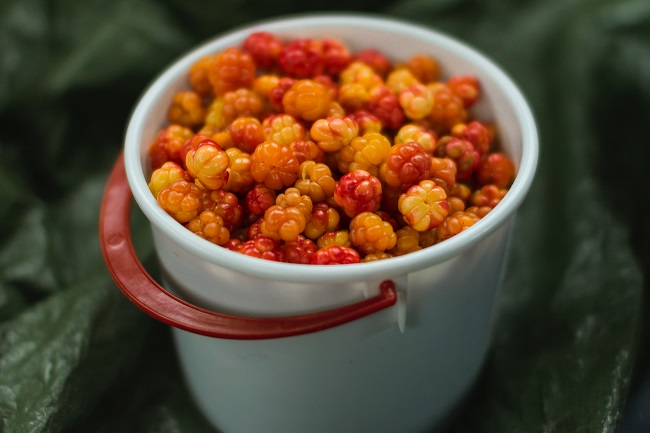
Cloudberries (Rubus chamaemorus), also known as “bakeapples” in some regions, are a unique and sought-after fruit that thrive in the cold climates of the Northern Hemisphere. These golden berries are highly prized for their sweet and tangy flavor, making them a popular ingredient in jams, desserts, and traditional dishes. While cloudberries naturally grow in harsh Arctic environments, it’s possible to cultivate these delicious berries in your own garden with the right approach. Here’s a comprehensive guide on how to grow cloudberries.
Choosing the Right Location
Cloudberries require specific conditions to flourish. They prefer cool climates with short growing seasons and thrive in moist, acidic soils. If you’re in a warmer region, consider planting cloudberries in a partially shaded area to mimic the cooler conditions they prefer.
Soil Preparation
Cloudberries prefer acidic, well-draining soil. Before planting, amend the soil with organic matter such as peat moss to improve drainage and acidity. Perform a soil test to determine the pH of your soil, aiming for a pH between 4.5 and 5.5 for optimal growth.
Planting
Cloudberries are typically propagated through seeds, division, or cuttings. However, keep in mind that they have a reputation for being challenging to cultivate from seed. Purchasing cloudberry plants from a reputable nursery is often the best option for successful cultivation.
Division
If you have access to mature cloudberry plants, you can divide them in early spring. Dig up the plant and carefully separate the roots into smaller sections, each containing several healthy shoots.
Cuttings
Take stem cuttings from mature plants in late winter. Plant the cuttings in a mixture of peat and sand, keeping them in a cold frame until they root.
Planting Cloudberries
Choose a planting location with the right soil conditions. Space the cloudberry plants about 2 to 3 feet apart to allow for their spreading growth habit. Dig holes that are large enough to accommodate the plant’s root system. Place the cloudberry plant in the hole, ensuring that the top of the root ball is level with the soil surface. Backfill the hole with soil and gently firm it around the plant. Water thoroughly after planting to settle the soil around the roots.
Care and Maintenance
Watering: Cloudberries prefer consistently moist soil but avoid waterlogged conditions. Mulching around the plants can help retain moisture and regulate soil temperature.
Fertilization: Cloudberries don’t require heavy fertilization. A light application of a balanced, slow-release fertilizer in spring is usually sufficient.
Pruning: Cloudberries have a sprawling growth habit. Prune away any dead or weak growth in late winter or early spring to encourage healthy new growth.
Protection from Pests: Keep an eye out for pests like aphids and caterpillars. Monitor your plants regularly and address pest issues promptly.
Harvesting: Cloudberries typically ripen in late summer to early fall. The berries are ready for harvest when they turn a golden color and are soft to the touch. Gently twist or pull the ripe berries from the plant. It’s important to harvest them carefully to avoid damaging the delicate fruits.
Conclusion
Growing cloudberries requires careful attention to their specific requirements, but the reward is the opportunity to savor the delectable taste of this Arctic treasure right from your garden. With the right location, soil preparation, planting techniques, and ongoing care, you can enjoy the pleasure of cultivating these unique and flavorful berries, bringing a touch of the northern wilderness to your own backyard.
11 Fun Facts About Cloudberries
Arctic Gold: Cloudberries are often referred to as “Arctic gold” due to their rarity and the high value they hold in northern cultures. They are cherished for their unique flavor and versatility in culinary uses.
Unique Growth Habit: Unlike many berries that grow on bushes, cloudberries grow on low, creeping plants that can be found in peat bogs, marshes, and other wetland areas. They often carpet the ground with their distinctive leaves and golden berries.
Slow Ripening Process: Cloudberries have a slow ripening process that can take several weeks. This prolonged ripening contributes to their unique flavor profile, combining sweetness and tartness.
Cultural Significance: In Nordic countries, cloudberries are highly valued and are used in traditional dishes and preserves. They are sometimes associated with folklore and have even been used as a symbol in various myths and stories.
Multifaceted Use: Cloudberries are versatile ingredients. They can be eaten fresh, used in jams, jellies, sauces, and desserts, and are even incorporated into alcoholic beverages like liqueurs and wines.
Source of Vitamin C: Cloudberries are rich in vitamin C, which is an important nutrient for boosting the immune system and overall health.
Darkening with Time: As cloudberries age, they can darken in color, becoming deeper shades of orange or even red. This change in color is a natural process and doesn’t necessarily indicate spoilage.
Limited Commercial Cultivation: Due to their specific growth requirements and the challenges of cultivating them, cloudberries are not as commonly cultivated on a large scale as other berries. They are often harvested in the wild or in small garden plots.
Bog Treasure: Cloudberries are often found in boggy and marshy areas, making them a true treasure for foragers who venture into these unique habitats to find these precious berries.
Northern Range: Cloudberries are found in cold northern regions around the world, including parts of Canada, Scandinavia, Russia, and Alaska. Their ability to thrive in these harsh environments is a testament to their resilience.
Traditional Medicine: In some cultures, cloudberries have been used for their potential health benefits beyond just their delicious flavor. They have been used in traditional medicine for various purposes, including soothing sore throats and aiding digestion.
Related Articles & Free Email Newsletter Sign Up
Grow Your Own Pepper with a Peppercorn Plant




Comment here